Those of you who follow the blog know that I recently moved cross country and that in the process I had to sell a lot of my shop equipment that I use to do DIY stuff. One of those things was the big old eighty gallon air compressor that I built out of a scrap one years ago. With that gone, I bought this used pancake compressor off of Craigslist just to get me by until I get something to replace the big one.
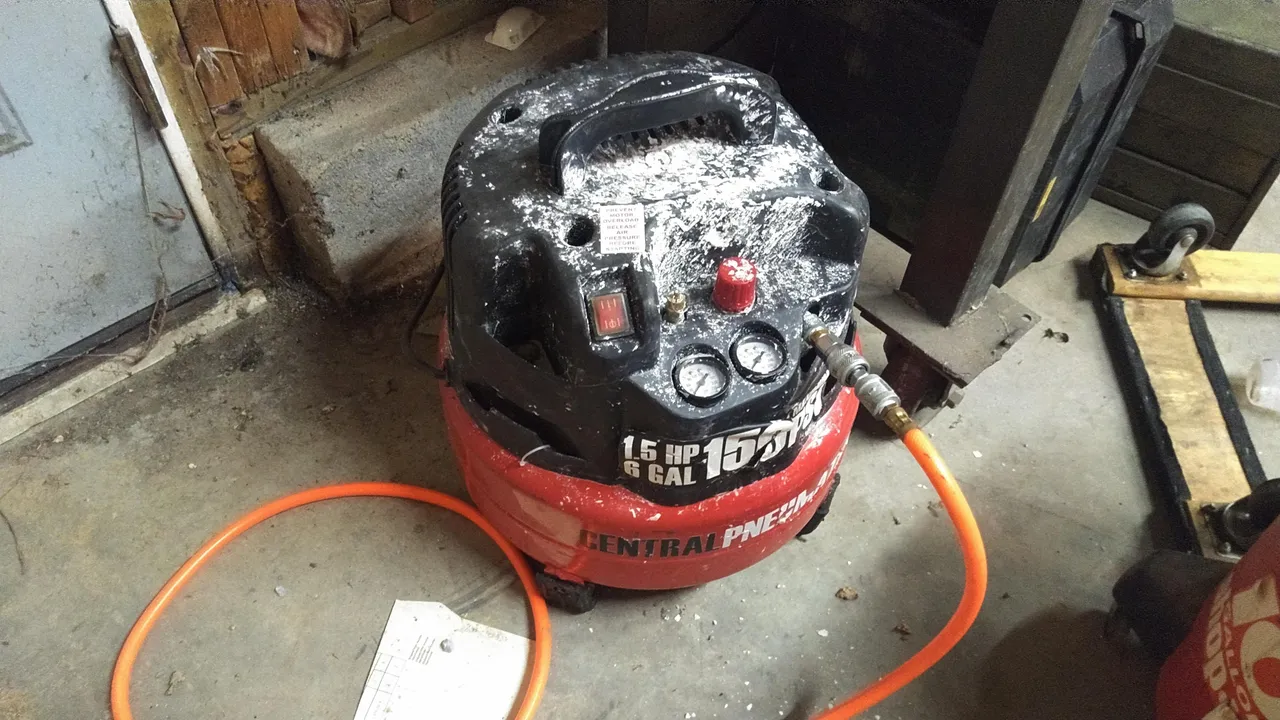
This little guy, while being portable and handy with adequate PSI to inflate even big truck tires, doesn't have a very big tank and doesn't move a lot of air very quickly. I don't want to spend the money just yet on buying a new large one because I've got a few phases of my plan here yet to complete before that point. This made it so I needed to improve the air compressor situation in the interim. To run things like my impact wrench and air ratchet for automotive stuff without having to wait five minutes between ugga duggas, something had to be done.
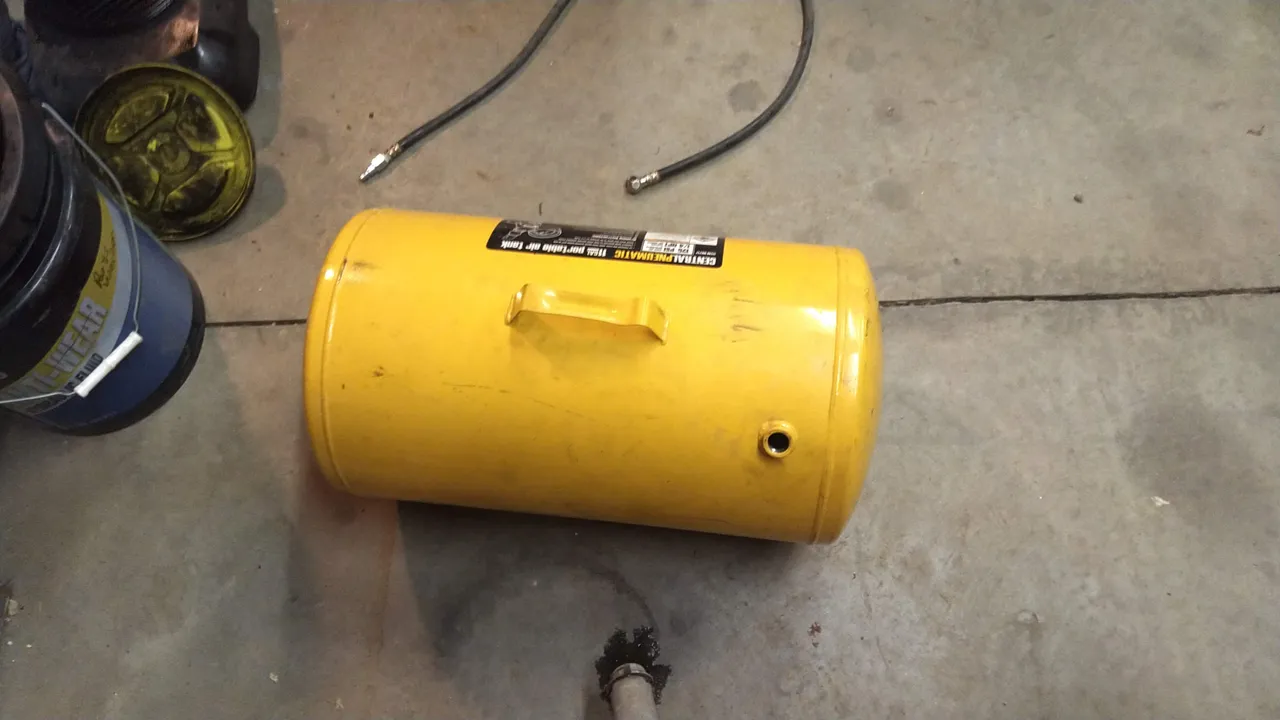
In comes this portable air tank that I used formerly to add air to my trailer tires, tractor tires, or pretty much anything that was located far away from my air compressor on the last property. Since the compressor itself is so portable now, I don't really need this tank for the time being, so I thought adding it to the air capacity of the 6 gallon pancake would do the trick.
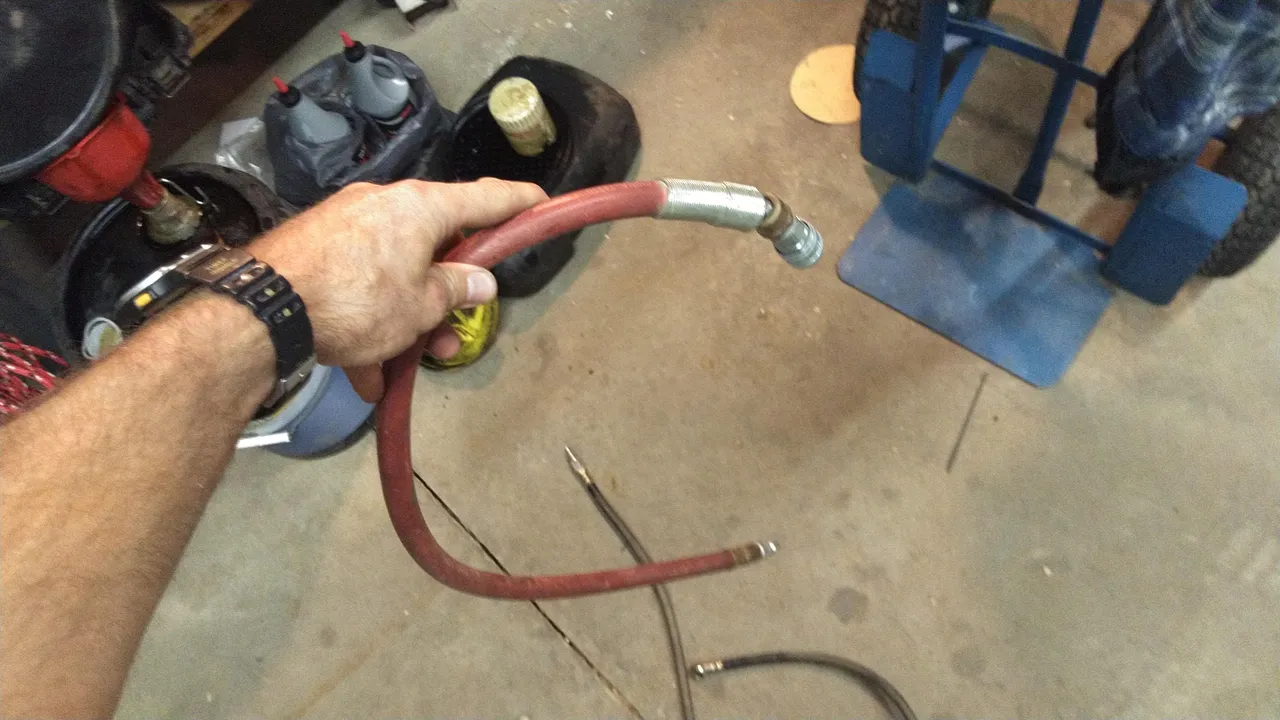
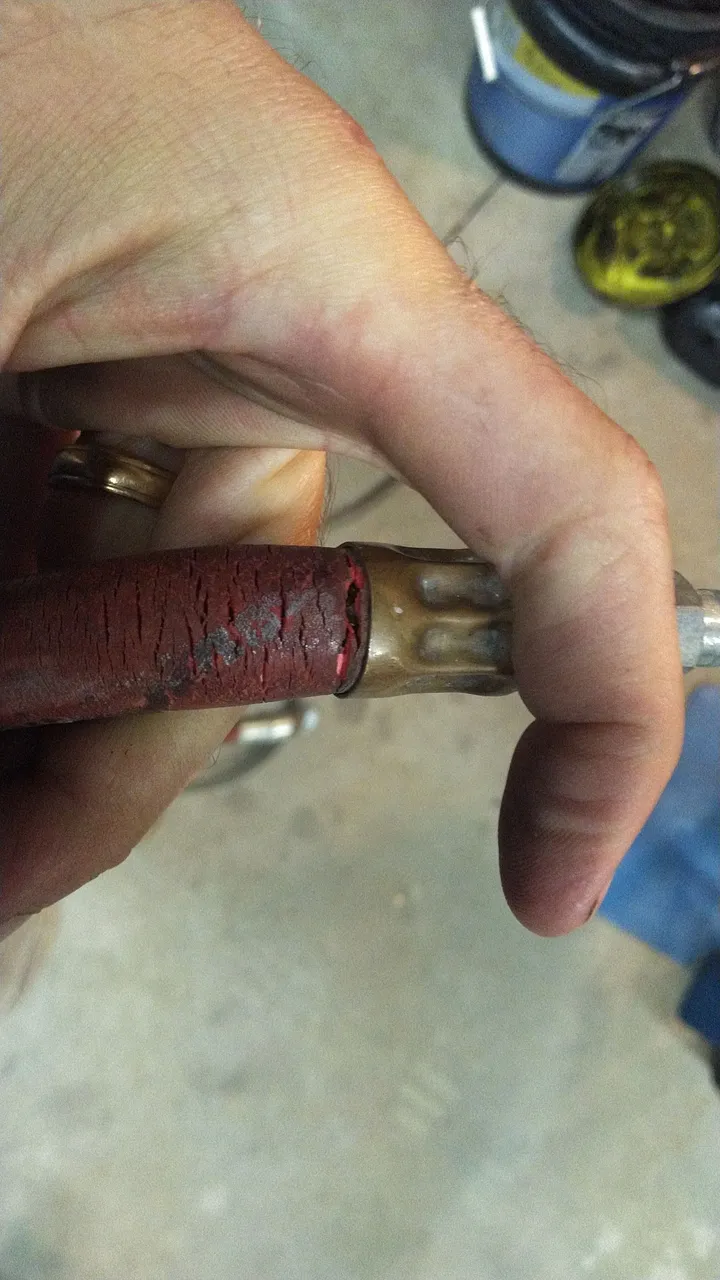
Since this is all temporary and I want it to be modular, and I'm being super cheap about it right now, I decided to rebuild this little rubber air hose to make the connection between the two. As you can see in the second pic, the rubber is dry rotted to the point that it leaks like a sieve, so it'll need a new length of hose. I also needed to get some fittings for the tank so that the quick-disconnect fittings can be mounted to it, so I went off to the hardware store and bought hose and some pipe fittings to reduce down from the half inch bung hole to the quarter inch size that the air compressor fittings thread into. I think in total I spent about ten to twelve dollars getting all of this together, which puts it pretty high on the frugal scale for me.
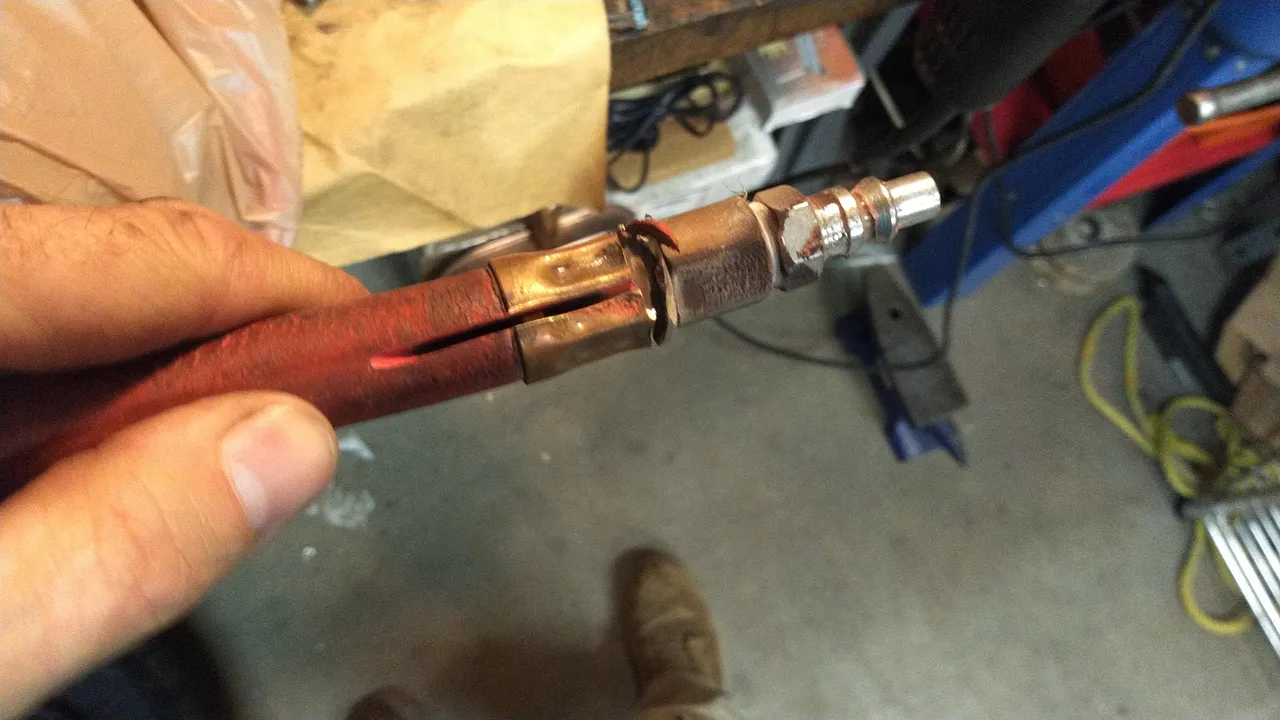
The first order of business after getting the hose and fittings was to detach the hose ends from the old hose, then attach them to the ends of the new length of hose. The old hose was crimped on to the fittings with a ferrule, so I cut the ferrule length-wise with my angle grinder cutoff wheel, then cut around the radius of the ferrule at the end so it could be bent out and away to release the rubber from the barbed fitting. For small stuff like this I like to clamp the handle of the angle grinder into the bench vise using rubber soft jaws, then bring the piece to the cutoff wheel to make the cuts. Sorry, I forgot to take a picture of my setup, but you can see the result in the pic above.

Since I don't have any ferrules to crimp on the ends, or the crimper and dies, these little hose clamps were what I used. It's a pretty tight fit slipping the barbed fittings into the hose, even these weak hose clamps are more than enough to keep the hose held in place and seal it.
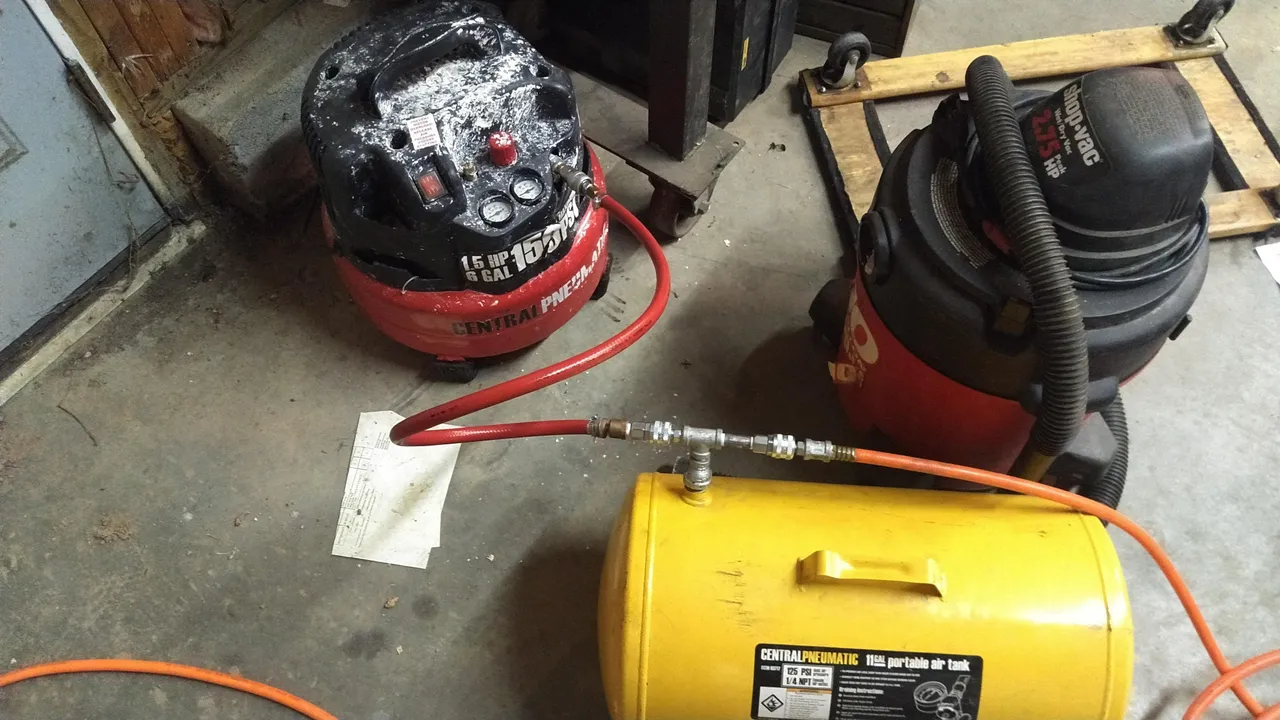
Here's the final result. I built a little manifold out of the pipe fittings that I picked up at the hardware store, and you can see that everything is hooked up with quick disconnect fittings. Now if I need to take the compressor somewhere else like to do work in the house, I can disconnect it from this setup and carry it away in seconds. The air coming out of the compressor is regulated, so I just set the regulator to 125 psi so as not to over-pressurize the portable tank, which is rated for only 125 psi while the compressor is rated for 150 psi. I did some work on one of my cars just yesterday using this setup and it worked beautifully. I only had one time that I ran out of air and it was when I was running out four separate bolts with the air ratchet, one after another, and then followed it up with trying to use the impact wrench on a large wheel nut. I had to wait that one time for it to recover to get the nut off. Not to bad considering that I wouldn't have gotten through a single one of those bolts with the air ratchet before needing to let the compressor recover again. This tripled the capacity of the compressor and it has already saved me lots of time. I'm still looking forward to getting a compressor with a big tank that can push a lot of CFM, but for now, this is going to work beautifully. Until next time, Steem on!